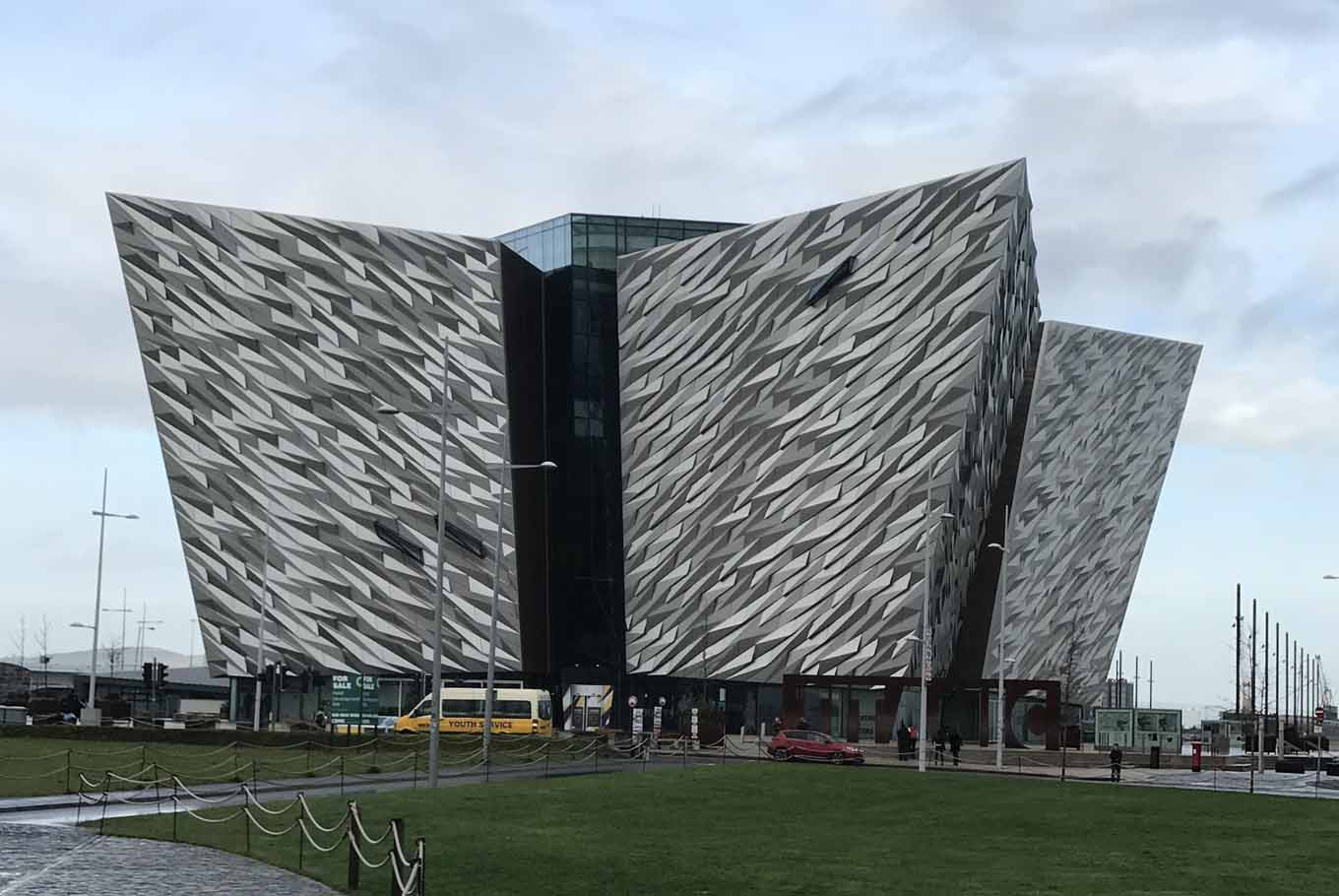A walk through Belfast
Long associated with the Troubles, the city has reinvented itself over the past two decades as an up-and-coming tourist center.
Change Size
 Titanic Belfast (JP/Tunggul Wirajuda)
Titanic Belfast (JP/Tunggul Wirajuda)
B
elfast City Hall’s Baroque Revival façade has continued to make an impression, more than 100 years after opening in 1896. Sporting a dome similar to Capitol Hill in Washington, DC, and the Reichstag in Berlin, the place was the inspiration behind other civic buildings in the Commonwealth, such as the Port of Liverpool building in Liverpool and City Hall in Durban, East Africa.
Belfast’s City Hall, however, is more than a formidable edifice. Much like the city it administers, the building has endured more than its fair share of conflicts, including both World Wars and the Troubles, the fratricidal sectarian strife that divided Belfast and the rest of Northern Ireland for three decades from 1969 to 1998. The conflict was between Irish Catholics on one side and Protestants wishing for union with the rest of Great Britain on the other.
“[City Hall] and the rest of the city center were cordoned off during the Troubles. Car bombings and rocket attacks have also been a regular occurrence” said Gavin, a tour bus operator and longtime Belfast resident. His recollections were backed by Belfast’s reputation as one of the world’s most dangerous cities in the 1970s and 1980s.
The City Hall building is one of the highlights of Belfast, the capital of Northern Ireland. Long associated with the Troubles, the upheaval is one of a number of cataclysms – among them both World Wars and the sinking of the Titanic – that have affected Belfast since Queen Victoria gave the city its charter in 1888. The visible legacies of these events served to draw more than a fair share of travelers to Belfast, as the city has reinvented itself over the past two decades as an up-and-coming tourist center.
Chronicling a troubled past
The mural of Provisional IRA militant Bobby Sands and others like it continue to be the draw for Falls Road. Made in 1998 by unknown artists to commemorate his death at the age of 27 during a hunger strike in 1981, the vivid colors and Sands’ radiant grin convey a confidence in his cause.
“Our revenge will be the laughter of our children”, reads one phrase. The words were validated by the Good Friday Agreement. Signed in 1998, the agreement ended the Troubles and enabled Belfast’s Catholics and Protestants to jointly govern Northern Ireland.
Other murals commemorated the IRA’s struggles for Irish independence and their more recent fight for equal rights in Protestant-dominated Northern Ireland, as well as activists killed by Protestant militants.
Recognized as an Irish language and cultural center in Belfast, the working-class area is also known for its IRA and left-wing tendencies. A highlight is the Solidarity Wall, which reflects the neighborhood’s sympathies with freedom movements around the world. The murals here highlight iconic causes ranging from Palestinian statehood and the late Nelson Mandela’s fight against apartheid in South Africa to climate change.
The imagery and causes of the murals on Shankill Road contrast with those on Falls Road. Tributes to gun-toting paramilitaries on the buildings alternate with aggressively patriotic affirmations to Queen and country. Both are interspersed with memorials to victims of IRA militant attacks at places like the Bayardo pub or Frizzel’s Fish Shop. The drawings’ larger than life dimensions and crude touches give this Protestant Unionist stronghold an edgy menace and besieged atmosphere. Similarly, the rhetoric and imagery show the tragedy of a community caught up in a vicious cycle of revenge and reprisals lasting for generations.
“[The Troubles] would get people who laugh at the same jokes and support the same Premier League teams on each other’s throats,” lamented Gavin. The images similarly show the turbulence of the times. “Normality for a police officer or prison official was finding a safe route to go to work. It also meant carrying a gun while they’re off duty or checking the car every day to make sure it’s not booby trapped.”
Gavin admitted that much still needed to be done, but he remained optimistic since “a lot has been achieved” over the years.
Read also: Retracing England's regal past in Hampton Court
A Titanic tribute
The hulking façade of the square building fills one’s eyes and grows larger as one approaches the old Harland & Woolf shipyards in Belfast’s Titanic Quarter. Standing at 38 meters on its four sides, the edifice resembles a ship’s hull and was built to the same measurements. Yet the same structure and its jagged surface reminds one of an iceberg looming out of the open ocean.
The subliminal sensations are no mere coincidence, as the building is none other than the Titanic Belfast monument and convention hall. Built by architectural firm Eric Kuhne and Associates, Titanic Belfast opened in March 2012 on the centenary of the RMS Titanic’s doomed maiden voyage. An intricate series of interactive galleries make up the centerpiece of the 12-thousand-square-meter structure. The galleries chronicle Belfast’s beginnings in the linen trade and its transition into a shipbuilding center at the turn of the 20th century. Featuring period photos and captions, the galleries hint at the scale of Titanic’s construction.
“To keep sailing, Titanic burned around 600 tonnes of coal every day. Over 3000 times the emissions of Titanic Belfast!” reads one caption of the ship, which was run by the White Star Line. “Titanic had three massive propellers which drove the ships. The two wing propellers had a diameter of over twenty-three feet (7m); the central propeller was sixteen feet six inches (5m).”
Aside from the facts about Titanic’s construction, the exhibits also features notable personages whose fates were intertwined with the ship. They include those who went down with the Titanic, among them the ship’s designer Thomas Andrews and millionaire John Jacob Astor. Just as poignant were the period headlines of Belfast’s newspapers announcing the names of the shipyard workers who died on Titanic.
Sets of teapots and other china as well as linen tablecloth from Titanic’s sister ship Olympic evoked the era. The sets recall the dignified luxury of travel at the time. Perhaps the most evocative exhibit is a reproduction of the original staircase from James Cameron’s 1997 blockbuster Titanic.
The shipboard experience can also be found on the SS Nomadic, another ship in the Titanic Quarter. Known as the tender that brought passengers who boarded the Titanic from the French port of Cherbourg, the vessel was the last ship of the White Star Line still in existence. While a walk on the Nomadic’s decks might evoke the Titanic’s experience, a walk through Belfast is an eye opener of its storied history.






